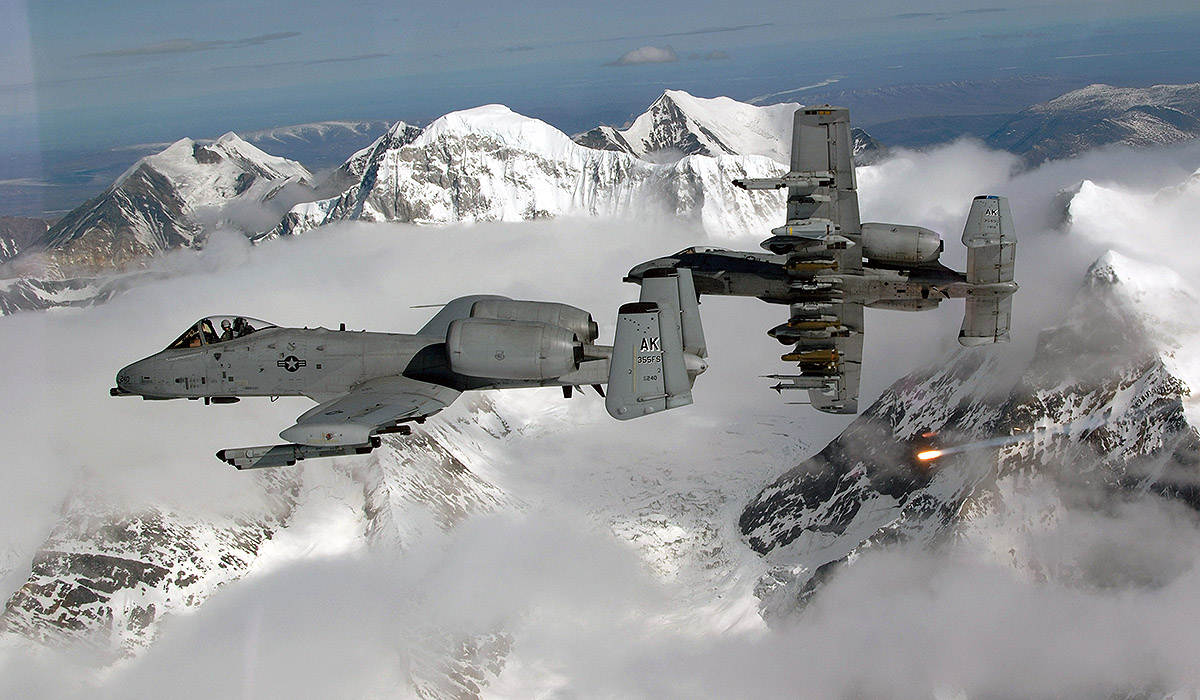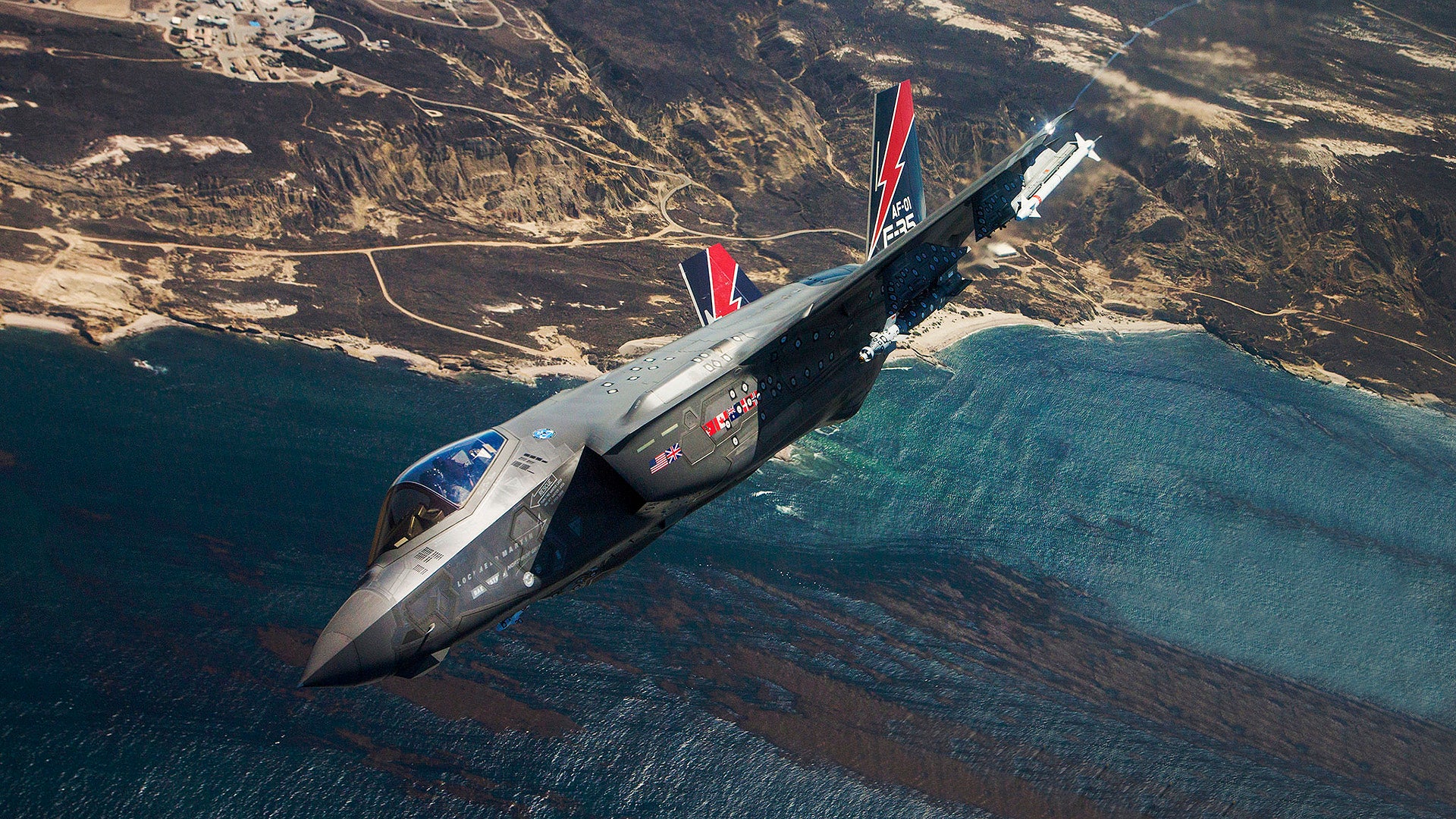Two of the Air Force’s most controversial initiatives were ripped to pieces in separate government reports that were made public this week, with one leaked and one published. Both bring a much needed dose of reality to issues that have in recent months benefitted greatly from huge public relations campaigns aimed to deflect relevant criticism, and even to confuse the public. This has included declaring the F-35A operational, and floating the idea that the USAF is looking at replacing the A-10 that it supposedly can’t afford with no less than two new close air support-oriented platforms.
The Pentagon’s director of test and evaluation slams the F-35 program
Bloomberg obtained an internal memo originated by the Pentagon’s Director of Test and Evaluation, dated August 9th, 2016. In it, Michael Gilmore, the Defense Department’s director of testing, says “the program is actually not on a path toward success but instead on a path toward failing to deliver the aircraft’s full capabilities, for which the Department is paying almost $400 billion by the scheduled end of its development in 2018.”
As we have pointed out before, Gilmore also notes that achieving full combat capability is not likely to occur before developmental testing is complete and operational testing begins.
Bloomberg continues: “The program ‘is running out of time and money to complete the planned flight testing and implement the required fixes and modifications’ needed to finish the phase successfully, he said. ‘Flight testing is making progress but has fallen far behind the planned rate.’
“The most complex software capabilities ‘are just being added’ and new problems requiring fixes and verification testing ‘continue to be discovered at a substantial rate, Gilmore wrote to Air Force Secretary Deborah Lee James; General David Goldfein, the service’s chief of staff; and Frank Kendall, the Pentagon’s acquisitions chief.”
As for the idea that the F-35 is ready for combat, Gilmore states that older aircraft would be needed to provide critical support for the F-35 in order to be considered as such, including to “locate and avoid modern threats, acquire targets and engage formations of enemy fighter aircraft due to outstanding performance deficiencies and limited weapons carriage.”
The F-35’s sensor fusion capabilities continue to be especially problematic. Flightglobal.com writes: “In the memo, DOT&E detailed over a dozen deficiencies that must still be addressed on Block 3i, but referred to hundreds of capability shortfalls that still remain in Block 3F, which is needed to reach full operational capability, according to the memo.
“The F-35A’s sensor fusion system is designed to blend inputs from multiple onboard and offboard sensors into a single picture presented to the pilot, but it still isn’t working. Tracks on single airborne targets are “splitting” on the displays, as the fusion algorithms confuse single tracks with multiple targets. Some airborne tracks simply disappeared from the pilots’ displays and could not be recalled, the memo states. The air force also identified other fusion issues in Block 3i including inconsistent or ineffective electronic warfare capabilities.”

Among a slew of deficiencies, Gilmore also highlights the F-35’s gun woes, and that it may not even meet its revised testing and operational dates. Bloomberg quotes the memo: “All three models of the F-35 are ‘are at risk of not having a functioning and accurate gun’ in time for the combat testing because ‘significant deficiencies discovered during initial testing’ in 2015 ‘require multiple modifications’ before accuracy testing can begin.”
As we have stated previously, the F-35 will likely not be able to test its cannon and helmet-mounted display aiming scheme until at least 2018, as software and hardware delays continue to loom even though the USAF promised it operational by 2017 after previous delays.
This memo underscores the reality that, although progress has been made, the jet still has a long way to go regardless of what the manufacturer or the Joint Program Office say, or what arbitrary level of readiness the USAF slaps on the aircraft. Overall, it appears that Mr. Gilmore has come to the same conclusion as we did around the time of the USAF’s declaration of initial operating capability for the F-35A earlier this month.
GAO slams USAF for not realizing the implications of canning the A-10 Warthog
The Air Force has insufficient data to fully understand and quantify the impact of retiring its nearly 300 A-10 Warthogs by the end of 2021, according to this report by the Government Accountability Office. Nor does it have any clear plan to replace the aircraft, especially in key roles outside of basic close air support, including the incredibly dynamic and dangerous combat search and rescue armed escort “Sandy” mission.
Even the way in which retiring the A-10 fleet will impact the remaining fighter force has been left unaddressed by the USAF. If already tired “legacy” platforms have to fill the gap left by axing so many tactical aircraft over such a short period of time, it could further exacerbate the USAF’s fleet management and cost woes it’s experiencing today.
Retiring the A-10 would also require changes to the training requirements of other CAS platforms, especially manned tactical jets. More training for the USAF’s multi-role fighter squadrons on CAS means either more money would have to be allocated to do so, or that training for other critical mission sets will suffer.

There is also the level of overall expertise the A-10 community brings to the CAS mission that would be increasingly degraded over time if the type were retired and its pilots dispersed to other platforms. The Air Force appears to be in the early stages of moving to address this issue, albeit on a wholly inadequate basis, by standing up a F-16 tactics development squadron exclusively for CAS at Nellis AFB.
The USAF’s inability to address the impact of these issues with quality data resulted in the GAO concluding that, “Overall, the Air Force did not meet all best practices in estimating cost savings from A-10 divestment, which affected its ability to determine comparable alternatives. In its fiscal year 2015 divestment proposal, we found the Air Force’s cost estimates partially met best practices for being comprehensive, minimally met best practices for being well-documented and accurate, and did not meet best practices for being credible. Because the Air Force’s cost estimate did not meet best practices in these areas, the 2015 proposal potentially overstated or understated the actual savings from A-10 divestment. Additionally, Air Force officials stated they used similar practices to estimate cost savings when developing budget requests for fiscal years 2016 and 2017, thereby continuing to potentially overstate or understate the actual savings from A-10 divestment.”

None of this is new. The USAF has muzzled officers, skewed data, and has even misled the public as to an initiative to replace the Warthog with two new platforms despite the fact that the Secretary of Air Force knew nothing about it, and there is clearly no money available to actually do so. But what is new is the level of detail the GAO has put into making their case on lack of quality data to support the USAF’s claims alone.
The GAO concludes in their report:
“To make a well-informed decision about the future of its A-10 aircraft, we recommend that before again recommending divestment of the A-10, the Secretary of the Air Force:
• Develop quality information that fully identifies gaps in capacity or capability that would result from A-10 divestment, including the timing and duration of any identified gaps, and the risks associated with those gaps; and
• Use that information to develop strategies to mitigate any identified gaps. In addition, to further inform decisions about the future of the A-10, we recommend the Secretary of the Air Force, in considering divestment, develop a high-quality, reliable cost estimate utilizing best practices. As DOD faces future decisions on how to balance its existing capabilities and capacities against future modernization requirements, it will need quality information to help inform such decisions. To ensure that senior leaders have the quality information on which to base future force structure decisions, we recommend the Secretary of Defense develop and promulgate department-wide guidance that establishes specific informational requirements to be met before proposing divestment of major weapon systems that have not reached the end of their expected service lives. This guidance should require identifying gaps in capacity or capability that will occur for the proposing service and any other service if the divestment proposal is approved; recommending strategies for mitigating any identified gaps; and developing a high-quality, reliable cost estimate of the major weapon system proposed for divestment that can be used to identify alternatives for achieving similar savings.”

In the end, the whole A-10 debate is silly and tiring. The aircraft takes up less than 2 percent of the USAF’s yearly budget, and that does not include the tens of billions of dollars the service receives in addition for highly classified “black” programs. The A-10 is paid for, already upgraded, and ridiculously effective in the wars we are fighting today—not to mention it’s the most cost-effective tactical jet platform in the entire Air Force. It’s clearly a capability worth keeping, as it offers great reward at little cost and should not have to compete with the F-35. Nor should the F-35 have to compete with it. That’s an adversarial concept created by the USAF as part of yet another attempt to axe the A-10, nothing more.
Contact the author: Tyler@thedrive.com
